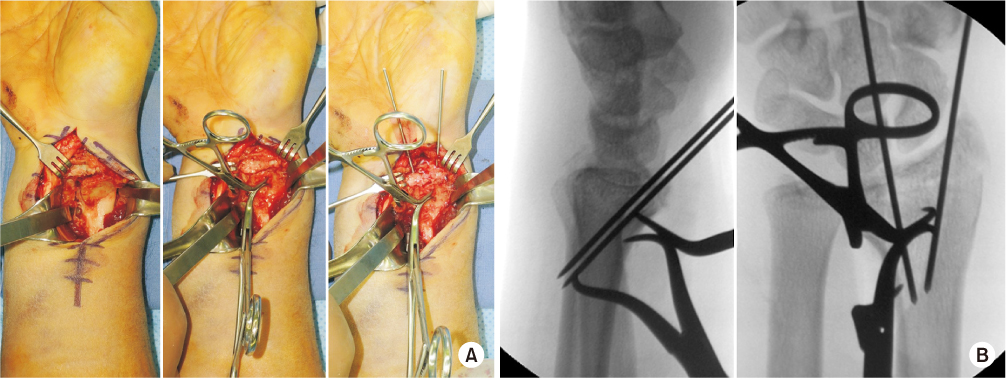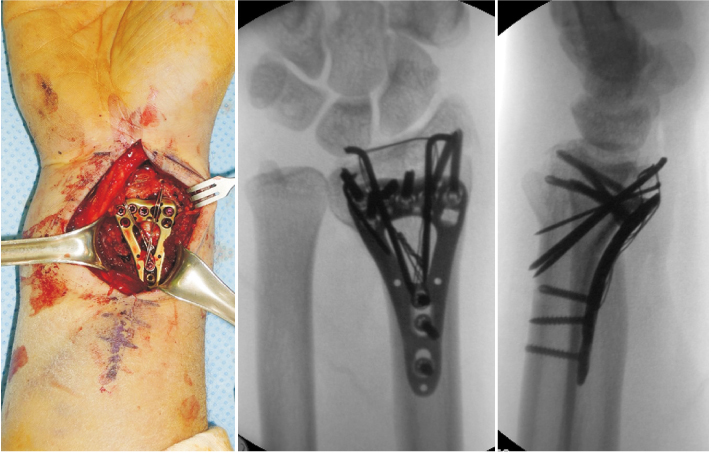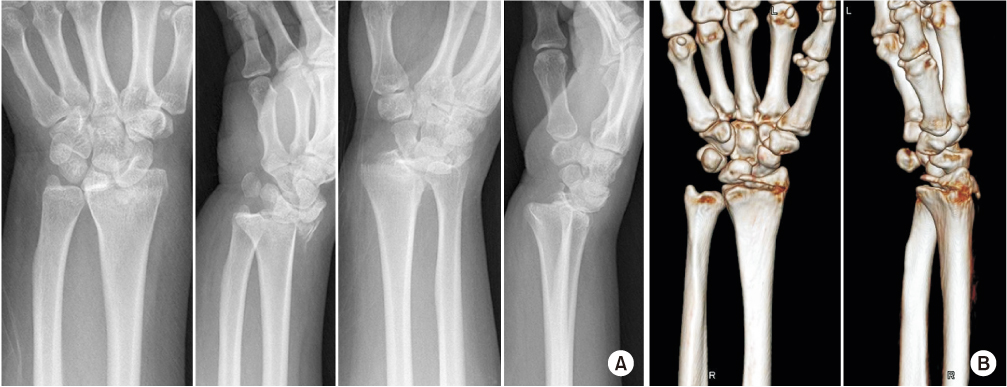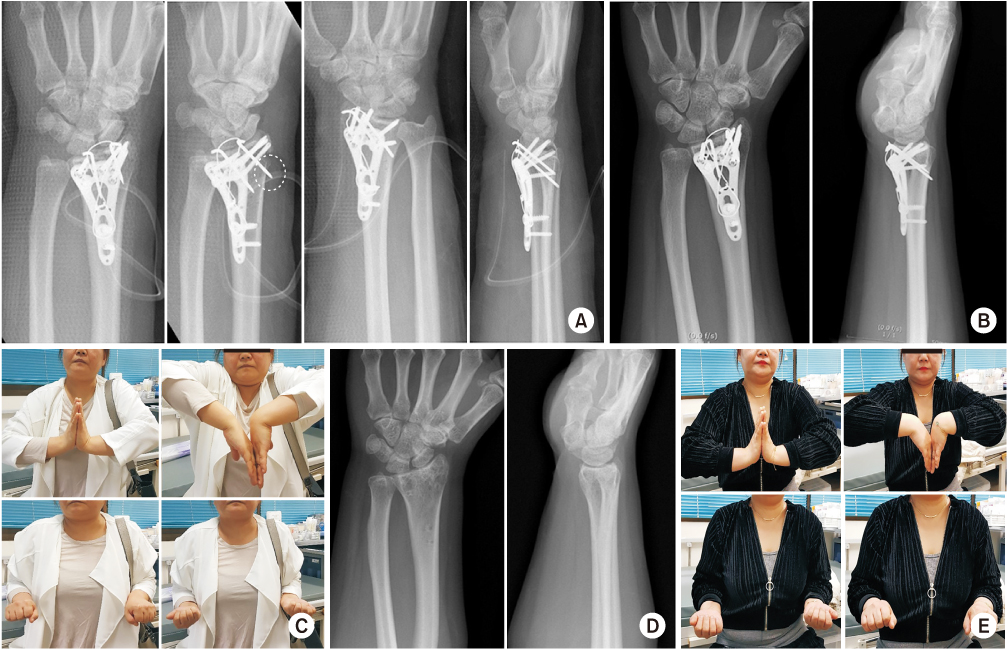J Korean Fract Soc.
2020 Jan;33(1):38-42. 10.12671/jkfs.2020.33.1.38.
Tension Band Wiring Technique for Distal Radius Fracture with a Volar Articular Marginal Fragment: Technical Note
- Affiliations
-
- 1Department of Orthopedic Surgery, MS Jaegeon Hospital, Daegu, Korea.
- 2Department of Orthopedic Surgery, Korea University Guro Hospital, Seoul, Korea.
- 3Department of Orthopedic Surgery, The Catholic University of Korea, Uijeongbu St. Mary's Hospital, Uijeongbu, Korea. medicyoung1979@gmail.com
- KMID: 2468673
- DOI: http://doi.org/10.12671/jkfs.2020.33.1.38
Abstract
- Most distal radius fractures are currently being treated with anterior plating using anatomical precontoured locking compression plates via the anterior approach. However, it is difficult to fix the volar articular marginal fragment because these anatomical plates should be placed proximally to the watershed line. There were just a few methods of fixation for this fragment on medical literature. Herein, we introduced a tension band wiring technique for fixation of a volar articular marginal fragment in the distal radius.
MeSH Terms
Figure
Reference
-
1. Conti Mica MA, Bindra R, Moran SL. Anatomic considerations when performing the modified Henry approach for exposure of distal radius fractures. J Orthop. 2017; 14:104–107.
Article2. Orbay J. Volar plate fixation of distal radius fractures. Hand Clin. 2005; 21:347–354.
Article3. Chin KR, Jupiter JB. Wire-loop fixation of volar displaced osteochondral fractures of the distal radius. J Hand Surg Am. 1999; 24:525–533.
Article4. Schumer ED, Leslie BM. Fragment-specific fixation of distal radius fractures using the Trimed device. Tech Hand Up Extrem Surg. 2005; 9:74–83.
Article5. Katznelson A, Volpin G, Lin E. Tension band wiring for fixation of comminuted fractures of the distal radius. Injury. 1980; 12:239–242.
Article6. van Aaken J, Beaulieu JY, Della Santa D, Kibbel O, Fusetti C. High rate of complications associated with extrafocal kirschner wire pinning for distal radius fractures. Chir Main. 2008; 27:160–166.
Article
- Full Text Links
- Actions
-
Cited
- CITED
-
- Close
- Share
- Similar articles
-
- The Clinical Results of Tension Band Wiring
- Tension band wiring and Modified tension band wiring in the Operative Treatment of Patella Fracture
- Modified Tension Band Wiring Combined with Anti-Gliding Loop Augmentation Technique for the Treatment of Comminuted Patellar Fracture: Technical Note and Report of Early Results: Technical Note
- Tension Band Wiring with Anchoring Screw in Medial Malleolar Fracture
- Operative Treatment of patellar Fractures







